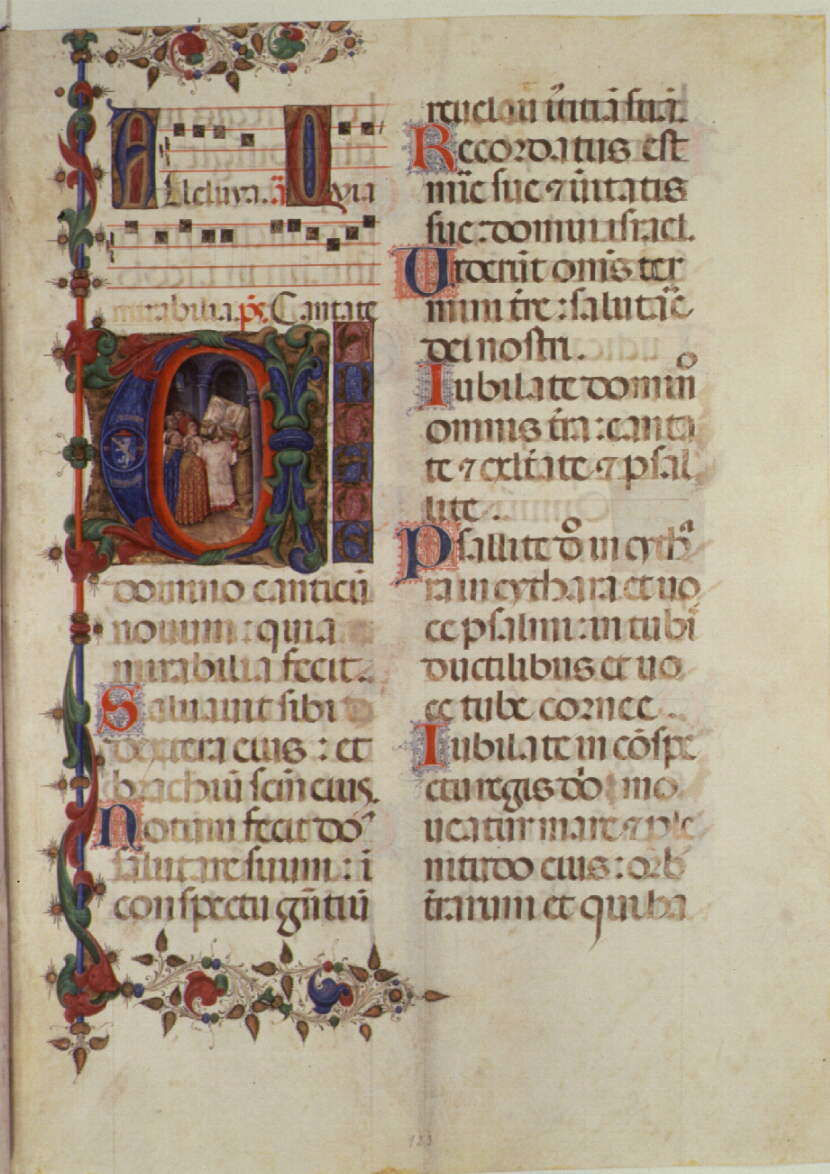In the Apostolic Exhortationm Sacramentum Caritatis, Pope Benedict XVI made a strong case for using music that is sacred during the Holy Sacrifice of the Mass.
Liturgical song
42. In the ars celebrandi, liturgical song has a pre-eminent place. (126) Saint Augustine rightly says in a famous sermon that "the new man sings a new song. Singing is an expression of joy and, if we consider the matter, an expression of love" (127). The People of God assembled for the liturgy sings the praises of God. In the course of her two-thousand-year history, the Church has created, and still creates, music and songs which represent a rich patrimony of faith and love. This heritage must not be lost. Certainly as far as the liturgy is concerned, we cannot say that one song is as good as another. Generic improvisation or the introduction of musical genres which fail to respect the meaning of the liturgy should be avoided. As an element of the liturgy, song should be well integrated into the overall celebration (128). Consequently everything -- texts, music, execution -- ought to correspond to the meaning of the mystery being celebrated, the structure of the rite and the liturgical seasons (129). Finally, while respecting various styles and different and highly praiseworthy traditions, I desire, in accordance with the request advanced by the Synod Fathers, that Gregorian chant be suitably esteemed and employed (130) as the chant proper to the Roman liturgy (131).
His second Apostolic Exhortation, Verbum Domini, drives home the point even further. He writes that:
f) Biblically-inspired liturgical songAs part of the enhancement of the word of God in the liturgy, attention should also be paid to the use of song at the times called for by the particular rite. Preference should be given to songs which are of clear biblical inspiration and which express, through the harmony of music and words, the beauty of God’s word. We would do well to make the most of those songs handed down to us by the Church’s tradition which respect this criterion. I think in particular of the importance of Gregorian chant.[246]
If we look at the GIRM, pre-eminence is given to the antiphons. According to the GIRM:
48. The singing at this time is done either alternately by the choir and the people or in a similar way by the cantor and the people, or entirely by the people, or by the choir alone. In the dioceses of the United States of America there are four options for the Entrance Chant: (1) the antiphon from the Roman Missal or the Psalm from the Roman Gradual as set to music there or in another musical setting; (2) the seasonal antiphon and Psalm of the Simple Gradual; (3) a song from another collection of psalms and antiphons, approved by the Conference of Bishops or the Diocesan Bishop, including psalms arranged in responsorial or metrical forms; (4) a suitable liturgical song similarly approved by the Conference of Bishops or the Diocesan Bishop.55
If there is no singing at the entrance, the antiphon in the Missal is recited either by the faithful, or by some of them, or by a lector; otherwise, it is recited by the priest himself, who may even adapt it as an introductory explanation (cf. above, no. 31).
In other words, the antiphon is the default while the hymn is the option. The antiphon is taken from Sacred Scripture. While most of the time, it comes from the psalms, the antiphon can also be taken from the various canticles found in the Epistles or from the Gospels. The verses, themselves, generally come from the psalms, unless one of the antiphons should happen to be drawn from the Magnificat.
Pope Benedict leads by example. In the Masses that he celebrates either at St. Peter's Basilica or the Lateran Basilica, the choir chants the entrance and Communion antiphons. They do sing a hymn during the Offertory and the Recessional.
However in most parishes in the United States, the hymn has become the default rather than the option. The general practice is to use what many call the "four-hymn sandwich": an Entrance Hymn, an Offertory Hymn, a Communion Hymn and a Recessional Hymn. It is very rare that the faithful ever get to listen, let alone, sing, the antiphons. As the Holy Father stressed in both Apostolic Exhortations, these should really be brought back to pre-eminence in the Holy Sacrifice of the Mass. He does not merely make the case for simply using the antiphons, he specifically upholds Gregorian chant as the method that should be employed.
Independent composers have taken the Holy Father's wise counsel to heart and have set the antiphons to music, using simple chant modes that the faithful can follow. One such composer is Fr. Sam Weber, OSB. Fr. Weber serves as the director for the Institute of Sacred Music for the Archdiocese of St. Louis. Others have also taken it upon themselves to do the same thing.
It should be noted that the recommendations that the Holy Father made in Verbum Domini should be read in tandem with what he wrote in Sacramentum Caritatis. In Verbum Domini, the Holy Father notes that Sacred Music be drawn from Sacred Scripture. In Sacramentum Caritatis, the Holy Father brings up the point that not only are the texts important, but style and format as well. While some can make the case that the music found in OCP's Spirit and Song book is taken from Sacred Scripture, the style and genre of music are not necessarily compatible as everything needs to correspond to the sacred mysteries being celebrated during the Holy Sacrifice of the Mass.
--------------------------------------------------
For more information on Fr. Weber's work, please follow the link below:
http://archstl.org/worship/page/institute-sacred-music

No comments:
Post a Comment